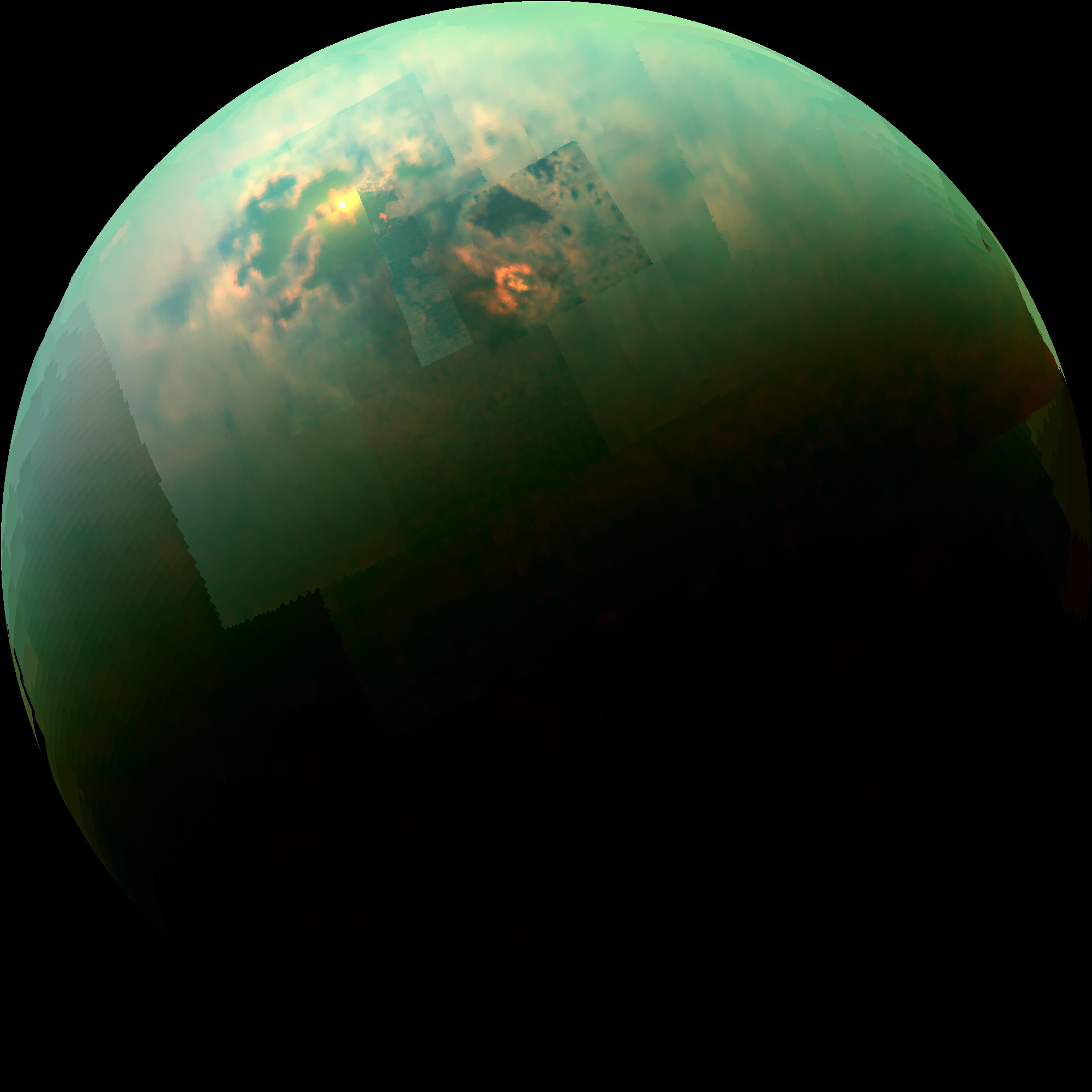Karst lakes on Titan
One of Saturn’s moons, Titan, has a number of similarities to Earth: it has a dense atmosphere, mountains, and deserts, it rains, snows, and storms, with precipitation collecting in lakes and flowing in rivers into oceans. One of the differences is that it is much colder there, with temperatures around negative 180 °C. Therefore, methane and ethane, which are gases on Earth, play the role of terrestrial water on Titan; they form ice and even the sand grains in the deserts consist of frozen methane mixed with water ice.
Most of our knowledge about Titan’s hydrogeology originates from NASA’s Cassini probe and ESA’s Huygens Lander. Even though Cassini long ago went out in a blaze of glory in Saturn’s atmosphere, its data is still delivering new discoveries. In its last fly-by past Titan on April 22, 2017, the probe delivered especially interesting information on the small lakes of Titan’s western hemisphere.
These lakes were not located where they were expected, that is, in the valleys, but instead up on the mountains, which act like large tablelands. The structures there apparently have properties similar to Karst lakes on Earth. The liquid in the lakes, to some extent, excavates the subsurface, which consists of ice, by breaking it down, much like water does to karstic rock on Earth. For bathing, you would have to drive up into the mountains on Titan, at least if you lived on the western half of the moon.
The eastern half, in contrast, and this division is also unusual, consists of lowlands and large oceans, which, unfortunately, wouldn’t be suitable for surfing due to the viscosity of liquid methane. If surfing was possible anywhere, it’d have to be on the small mountain lakes, because these primarily consist of methane, while the flat oceans contain a mixture of methane and ethane, which would be even more viscous. Some of the lakes even undergo a continuous seasonal cycle, in which they are born from rain, only to disappear again, like many lakes in terrestrial desert areas.
